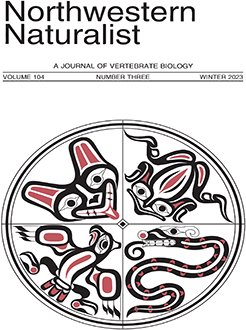I provide the 1st account of flights by Little Brown Myotis (Myotis lucifugus) transitioning from autumn roosts to noncavernous hibernacula. I tracked all or part of the flights of 5 bats, 3 males and 2 females. Two bats hibernated at their last location, 2 additional bats presumably hibernated at their last locations, which were near known hibernacula, and 1 bat was traveling toward that same hibernation area when fog prevented us from following her inland. Bats traveled an average of 26.9 km between day roosts and their hibernaculum or presumed hibernaculum (range = 21.2 to 36.3 km); corresponding straight-line distances averaged 16.2 km (range = 9.4 to 24.2 km). Travel speeds for 4 bats while they were actively tracked averaged 17.3 km h–1 (range = 10.2 to 25.9 km h–1). Two bats took detours along the way, spending at least 35 min at those locations before resuming their journeys. Average time from when bats left their day roost until they hibernated or I lost the signal was 2.2 h (SD = 1.6, range = 0.8 to 4.3 h). Bats followed coastlines, creek drainages, and ridgelines while traveling over land and used peninsulas and islands when traveling over the ocean, possibly to minimize the distance they traveled over open water.
How to translate text using browser tools
11 December 2023
MOVEMENTS OF LITTLE BROWN MYOTIS FROM AUTUMN TRANSITION ROOSTS TO HIBERNACULA NEAR JUNEAU, ALASKA
Karen Blejwas
ACCESS THE FULL ARTICLE

Northwestern Naturalist
Vol. 104 • No. 3
Winter 2023
Vol. 104 • No. 3
Winter 2023
bats
hibernation
Little Brown Myotis
movement ecology
Myotis lucifugus
radiotelemetry
seasonal movement




